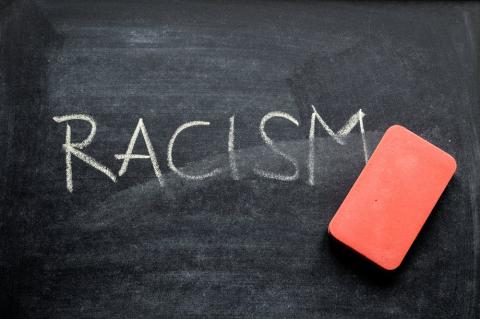Recent protests in Charlottesville, Virginia, ended violently, as white supremacists clashed with counter-demonstrators, and a car driven by 20-year-old James Alex Fields Jr., ploughed into a crowd full of anti-racist and anti-fascist protesters, killing 32-year-old Heather Heyer and injuring at least 19 others.
According to Al Jazeera, the “Unite the Right” rally, was planned for Saturday, August 12, in an effort to protest the removal of a statue of Confederate soldier and icon, General Robert E. Lee.
It’s since been described as one of the largest white supremacist events in recent US history, and was predicated the previous night when protesters gathered at the University of Virginia carrying tiki torches and yelling slogans like “white lives matter” and “blood and soil.”
The recent incidents in Charlottesville, and similar protests in places around the country, have left parents and educators wondering how to talk to their children about bigotry, racism, and diversity. One educator in particular has come out to express the importance of tackling white supremacy at the school level.
Derek Weimer was one of James Alex Field’s Jr’s teachers, and taught three classes that Fields was involved in.
In a recent interview with NPR, member state WVXU reporter Bill Rinehart, Weimer notes that Fields was an intelligent student who didn’t cause a lot of trouble, but he also noted that the quiet boy was also entrenched in learning about Adolf Hitler and white supremacy.
While he tried his best to steer Fields away from those interests, on hearing about the incident he believed that he had failed as an educator, despite having good intentions.
It’s a problem that many teachers grapple with.
“I believe most teachers have great intentions, but I do believe they are grossly underprepared for the types of complexity they face every day in school,” writes H. Richard Milner, director of the Center for Urban Education at the University of Pittsburgh.
Milner has spent his career leading professional development for teachers, schools, and districts helping them to implement teaching strategies that deal with race.
“Until we get race right, until we get class right, until we get the intersection of race and class correct, we're going to reap the consequences of it,” Milner tells NPR.
“So we can continue walking around like race and racism and issues of discrimination are not pervasive, but the students are the ones who are grossly underserved. As adults, even if it might make us uncomfortable, we've got to engage in these uncomfortable conversations. Even if we disagree.”
It’s an ideology many teachers are coming to accept in a new age of overt racism.
All over the country, teachers are starting new programs and sharing resources from preschool through college--both by supporting diversity and inclusion in their programs, and in some cases talking very openly and distinctly about race and white supremacy.
In a recent video demonstration, Kate Jordan-Downs, KinderCare Education’s Director of Inclusion argues that bringing up the ways in which children are different is a good thing, and needs to start early on.
“‘Why is that child’s skin a different color than mine?’ ‘Why can’t that child walk by himself?’ Children notice each other’s differences--and they often ask questions about it,” Jordan-Downs says. “Those questions may make adults feel flustered, but that curiosity is a good thing. These questions give you an opportunity to discuss differences in a positive way.”
She is in the unique position to ensure that KinderCare offers a safe environment for children of all ages to embrace and celebrate their diversity and that the learning environment fosters self-confidence.
Universities have also begun making subtle changes to their curriculum in order to break down biases and pay more attention to the ways that diversity and cross-cultural differences matter.
Rush University’s Department of Pediatrics recently adopted a diversity and inclusion educational program, the first of it’s kind to include a formal curriculum for their residents and faculty, rather than having additional workshops for staff and faculty.
“Ability, age, culture, education, ethnicity, gender, race, religion and socioeconomic status are a few of the many factors that can alter our expectations and perceptions of others,” the University’s website notes.
“The educational program will help participants identify their inherent biases and understand how they affect our attitudes towards others. Through assessment, conversation and education, participants will make connections between knowledge and behaviors.”
In explaining the reasoning behind adopting this new curriculum, Sherald Leonard, MD, co-chair of the Department of Pediatrics diversity and inclusion task force notes that in order to provide excellent care, leaving these biases behind is essential.
Others have taken to Twitter, using the hashtag #CharlottesvilleCurriculum to serve as an ongoing list of resources to teach students about racism and current events in the classroom.
The Critical Media Project of the University of Southern California has also stepped up to offer lesson plans and resources for talking about media literacy as it relates to race, ethnicity and identity.
These resources and initiatives are important steps forward. As tensions mount, it’s important that teachers prepare themselves for the difficult conversations to come.
As Milner argues, in order to disrupt racism and prevent it from affecting students moving forward, it’s up to teachers to begin disrupting and confronting the prevalence of racism on both a micro and macro level.
Photo Credit: sebastianosecondi / shutterstock.com
